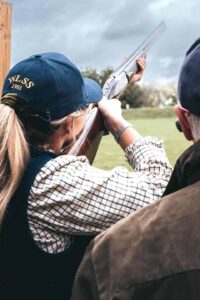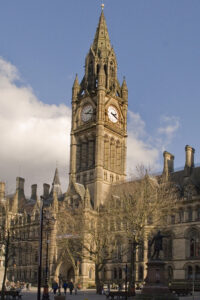Looking forward to attending a birthday party, wedding celebration, or perhaps a typical night out with the gang?
If you are bringing a car and planning on drinking as well, you should know that the UK has strict limits on the amount of alcohol when driving.
The four countries of the UK, England, Wales, Scotland, and Northern Ireland have their own rules and regulations on drink driving.
It is best to be aware of each country’s imposed UK Drink Drive Limit Units.
Even if you plan on drinking just a little, that amount can still affect your alcohol test results.
You are probably wondering – when can I drive after drinking and how much is too much alcohol?
In this article, you will learn about how alcohol is measured, when to drive after drinking, and other essential information on drink driving.
You will also learn about penalties sanctioned for committing a drink driving offence and frequently asked questions related to drink driving.
In summary, you will read about the following topics:
- What Is a Unit of Alcohol?
- UK Drink Drive Limit Units 2022
- UK Penalties for Driving Over the Alcohol Limits
- Reduce a Ban Caused by Driving Over the Alcohol Limits
- Who Are Considered High-Risk Offenders
- Frequently Asked Questions
Contents
What Is a Unit of Alcohol?
It can be difficult to measure how much alcohol you are ingesting due to the variety of alcoholic drinks, strengths, and available sizes.
Thus, the UK introduced counting alcohol units or alcohol by volume (ABV) in 1987 to get a better measure of how much alcohol a person consumed.
An alcohol unit is the unit of measurement used to calculate the amount of pure alcohol.
The size and strength of a drink affect the number of units. Generally, one unit is equivalent to 10 millimetres or 8 grams of pure alcohol.
One unit is what a typical adult can process within one hour, which means the amount of alcohol should be lessened or none left in that time frame.
To calculate the unit, you need to know the alcohol volume (ABV) of your drink. The formula will be:
- ABV x volume (ml) ÷ 1,000 = units
For example, a bottle of wine would normally have 12% ABV. If the volume of the bottle is 1,000 ml, the unit will be:
- 12% x 1,000 ml ÷ 1,000 = 12 units
Here is a list of some examples of common drinks and their alcohol units as indicated by NHS:
- Single small shot of spirits* (25ml, ABV 40%) – 1 unit
- Gin, rum, vodka, whisky, tequila and sambuca, large (35ml) single measures of spirits – 1.4 units.
- Alcopop (275ml, ABV 5.5%) – 1.5 units
- Small glass of red/white/rosé wine (125ml, ABV 12%) – 1.5 units
- Bottle of lager/beer/cider (330ml, ABV 5%) – 1.7 units
- Can of lager/beer/cider (440ml, ABV 5.5%) – 2.4 units
- Pint of lower-strength lager/beer/cider (ABV 3.6%) – 2 units
- Standard glass of red/white/rosé wine (175ml, ABV 12%) – 2.1 units
- Pint of higher-strength lager/beer/cider (ABV 5.2%) – 3 units
- Large glass of red/white/rosé wine (250ml, ABV 12%) – 3 units
You can use the Alcohol Change UK’s unit calculator to help you know the alcohol units of a drink.
UK Drink Drive Limit Units 2022
Now that you are aware of how alcohol is measured, let’s dive into the alcohol measurement limits in the UK.
Each person’s body reacts differently to alcohol. What is weak for others may be strong for some.
Moreover, not all drinks have the same strength, volume, and alcohol unit.

Source
Since it is difficult to set a standard for the number of allowable drinks per person, the UK has set the level of alcohol unit limits or drink drive limits instead.
It is worth noting that Scotland has a different drink drive limit from England, Wales and Northern Ireland.
How many units to drive is determined by the table below:
Table of UK Drink Drive Limit Units 2022
| Level of alcohol | England, Wales and Northern Ireland | Scotland |
| Microgrammes per 100 millilitres of breath | 35 | 22 |
| Milligrammes per 100 millilitres of blood | 80 | 50 |
| Milligrammes per 100 millilitres of urine | 107 | 67 |
UK Penalties for Driving Over the Alcohol Limits
What happens if you get caught driving while exceeding the alcohol limit? Of course, there will be severe consequences and strict drink driving penalties. You can go to prison, incur penalty points, pay a fine, and be banned from driving.
Moreover, it will affect your car insurance plan since it will be significantly higher. If you are a high-risk offender, getting your UK Driving Licence returned will be difficult.
Plus, it may become difficult to travel to other countries, and you run the risk of losing your job, especially if it is a job that involves driving.
When a UK court bans you, you will no longer be allowed to drive in the entire UK. The table below shows the possible penalties and offences if you are found guilty of drink-driving.
So before driving under the influence, think again if you don’t want to suffer these consequences.
Table of UK Drink Driving Penalties and Fines
| Found guilty of the following conditions | Penalty and fine |
| Being the driver of a vehicle while above the legal drink drive limit or found unfit caused by drink driving |
|
| Driving or attempting to drive while above the legal limit or found unfit caused by drink driving |
|
| Refusing to provide breath, blood or urine for alcohol test |
|
| Causing death by reckless driving due to drink driving |
|
Reduce a Ban Caused by Driving Over the Alcohol Limits
Getting a ban is not the end of the world, as it is possible to reduce it by a quarter by taking a drink-drive rehabilitation scheme (DDRS) course.
The court has the option to offer you a drink-drive rehabilitation course if you commit a drink-drive offence and have a ban of one year or more.
However, if you are a high-risk offender, you must reapply for a driving licence and undergo a medical examination.
Taking the drink-drive rehabilitation course is usually about £250. It usually involves face-to-face classes for 16 hours conducted in three weeks. To learn what the course teaches, you can check the complete course syllabus.
Should you decide to take the course, you should indicate it during the court proceedings since you cannot change the decision later on.
Follow the steps below on how to take a drink-drive rehabilitation course to reduce a ban.
- Find a drink-drive course by entering a centre name or number or selecting a geographic area.
- Wait for the court to send your details to the drink-drive rehabilitation providers.
- Wait for the course provider to inform you of the available dates and the expected course deadline.
- Once you complete the course, you will get a ‘certificate of course completion’, which is also sent to the court.
- Wait for the court to inform the DVLA, the one in charge of reducing your ban.
If you are from Northern Ireland, there is a separate procedure for taking a drink-drive course.
Those in Northern Ireland have the opportunity to get up to 25% of a reduced ban and the possibility of lowering car insurance rates. The course costs £155 or £110 for those acquiring a pension or full-time education.
The only accredited course provider is TTC, which conducts the course online so that you can take it from the comfort of your home. To book a course online in Northern Ireland, follow the steps below.
- Book a course.
- Select Drink Drive
- Enter your UK Postcode and TTC reference/NIP number, which is normally included in the letter given to you by TTC.
- Click Next.
- TTC should have your record already in the system. Follow the remaining steps indicated on the page.
Who Are Considered High-Risk Offenders
High-risk offenders will have to face the consequences of not getting their licence returned and not having the option to reduce a ban.
The only solution to get a licence is to reapply and take another medical examination to see if you are fit to drive again.
You will be given a D27PH renewal form three months before the end of your disqualification period.
The following conditions below describe a high-risk offender when drunk driving.
- Getting two drink driving offences within 10 years
- Refusing to conduct a breath, blood or urine test
- Drink driving with a minimum or higher alcohol test result of 87.5 microgrammes of alcohol per 100 millilitres of breath, 200 milligrammes of alcohol per 100 millilitres of blood, or 267.5 milligrammes of alcohol per 100 millilitres of urine
Frequently Asked Questions
How long does it take for alcohol to get out of your system to drive?
Not everybody processes alcohol the same way. It depends on the amount of alcohol consumed, alcohol strength, body size, the time passed, and how your body reacts to alcohol.
As indicated by the NHS, it generally takes an hour for an average adult to process one unit of alcohol.
What factors affect the level of alcohol?
Several factors may affect the level of alcohol in the body. Generally, it depends on a person’s weight, age, and metabolism.
The food you recently consumed and your stress levels can ultimately affect the level of alcohol. As mentioned, the type and ABV also affect the levels.
Can I drive 12 Hours after drinking?
There is no definite answer to this question, as it still depends on the abovementioned factors.
If you drank last night and plan to drive in the morning, there is still no guarantee if the level of alcohol has reduced.
Whether you let time pass 12 hours or more, the time varies on the amount of alcohol consumed and the ABV.
Can I speed up the process of getting alcohol out of the system?
Although some people may find drinking lots of water and eating food reduces the effects of alcohol, it is not guaranteed that the alcohol units are reduced in the body. The only way alcohol gets out of the system is by letting time pass.
What happens when I am stopped by the police while driving?
The police may ask for your car insurance information and UK Driving Licence. If they believe you are committing a drink-driving offence, they may ask you to take a breath test and do a physical or a field impairment test.
You cannot refuse these tests, or else you can be arrested on the spot.
How long does a driving ban last?
The length of a driving ban depends on the severity of your offence.
A ban can be as long as six months (12 or more penalty points within three years), one year (if found guilty twice within three years), or two years (if found guilty thrice within three years).
Is drink driving the same as drug driving?
Although similar, there are different laws imposed on drug driving. It involves taking illegal drugs or prescription medications that affect your driving and safety.
Get more information about drug-driving laws here.
How can drink driving affect my car insurance plan?
Your insurance may be affected significantly if you are convicted of drinking and driving. As well as paying higher premiums, you may have difficulty getting coverage as a consequence.
How can I know if I am over the UK drink drive limit units 2022?
The only way to know the exact number of units in your system is by using your own portable personal breathalyser.
Although it may not be foolproof, it can still give you a relatively accurate result, thus providing peace of mind.
You can use your own breathalyser to test yourself before hitting the road.
Final Thoughts
If you want to avoid penalties and offences for going over the alcohol limit, the best advice given by the police is to avoid drinking alcohol completely when driving.
Alternatively, you can always take a minicab or black taxi home or ride public transport such as buses and Tube. You can also hire a taxi or book private cars via taxi apps.
Do you also have a family member or friend who can pick you up? Any solution is best as long as you are not the one driving.
These laws are mandated by law to ensure safety, not only for you but for other people on the road.
Did you find this guide helpful? Let us know what you think in the comments section below.
For further reading on UK policies, you can refer to Winterville blogs and read topics about driving in London, penalties and offences, UK Driving Licence, and car insurance.


